#philip ii
Text
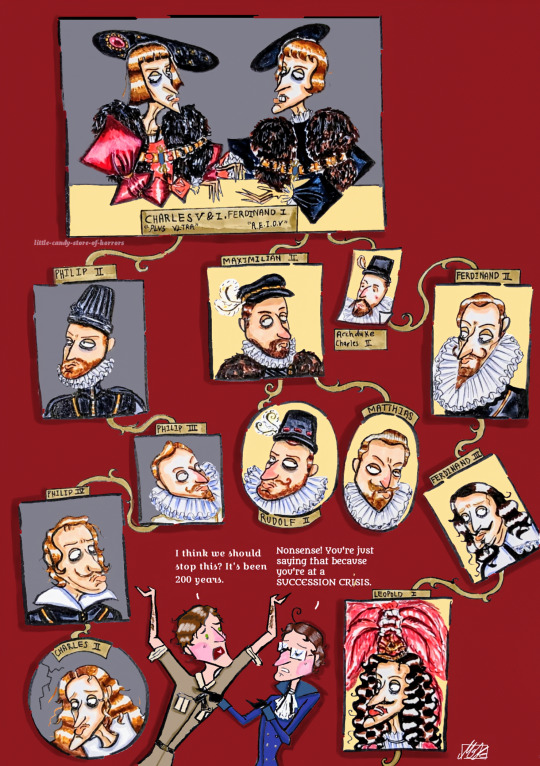
"Bella gerunt alii, tu felix Austria nube!"
Day 6 of @spaus-week 's challenge
"Let others wage war, you, happy Austria, marry!" Was the political strategy of the Habsburgs, and marry did the House of Austria! Infamously, scandalously, sensationally. A mangled wreath of a family tree. We all know this horror story. And we all know the bitter end.
After Emperor Charles V&I divided his Spanish and Austrian inheritance ((also gained through his parents' and grandparents' marriages)) to his descendants and those of his younger brother Ferdinand I respectively, the Habsburg dynasty split into two branches. The Spanish and Austrian Habsburgs notoriously intermarried for generations, right up till Charles II of Spain whose heirless death in 1700 sparked the War of the Spanish Succession. The inbreeding and this informal Latin motto behind it has been blamed to hell and back for their implosion, for the physical ugliness that ran in this royal bloodline. But it is not to say the Habsburgs never went to war, nor that dynastic marriage was a political strategy unique to them! But they were, if anything, bloody successful at it seeing how they did rule half of Europe for 200 years, and then a lot of it in the Austrian line for another 200. Before anyone figured out inbreeding was bad it was considered a privilege to marry into the Habsburgs, with Louis XV claiming that Louis XVI's betrothal to Marie Antoinette was marrying the "Daughter of the Caesars", and Napoleon Bonaparte infamously ditching Josephine for Marie Louise. Charles II was a poor sod who took the fall and the mugs were wretched from the same ugly gene being passed around countless times*, but they did wear power and privilege well.
💅✨ Symbolism bc I'm a NERD and this my Category 10 autism event ✨💅 :
Charles V & Ferdinand I's joint portrait based on that propaganda woodcut, behind them the colours of the Habsburg flag.
The Spanish branch, comprising Charles V & I's descendants, is represented with a black background, and the Austrian branch, comprising Ferdinand I's descendants, gold, both colours pulled from their flag, a dynasty intertwined but split in two.
Round frames denote that the individual had no heirs.
Only the most influential ruler on both sides, the King of Spain and the Holy Roman Emperor, are represented as framed portraits, explaining Archduke Charles II's unframed depiction.
The unconventional placement of Charles II of Spain and Emperor Rudolf II's nameplates are a nod to their queerness: their intersexuality and bisexuality respectively.
Ferdinand III's portrait is lopsided because of the losses of the 30 Years War.
Cracks in Charles II's portrait: 🙃🙃🙃
#Was this just an excuse for me to draw the family tree/wreath? YES. Might continue it to Blessed Karl™ *faints*.#That said i literally took three tries to get the Austrian branch right in just this fraction. Nightmare.#spausweek#Charles v#philip ii#philip ii of spain#Philip iii#philip iv of spain#felipe iv#charles ii of spain#Carlos ii#ferdinand i#Maximilian ii#rudolf ii#Emperor Matthias#Ferdinand ii#Ferdinand iii#Leopold i#16th century#17th century#habsburg history#house of habsburg#austrian history#spanish history#historical hetalia#aph austria#aph spain#roderich edelstein#Antonio Fernandez#Hetalia
18 notes
·
View notes
Photo

Pictorial map of the Kingdom of Macedonia during the reign of Philip II
by cattette1
99 notes
·
View notes
Text
I'm seeing some comments about Philip II's marriages floating around and I think it's time for some context, because different things are getting blurred together.
So his first marriage is to a teenager, Maria Manuela. But she's the same age as him. The real problem is she's his double first cousin, making them as closely related as half-siblings. Not good! Very bad! But the blame here really lies more with the parents for arranging this marriage.
Mary I'll skip over as she's older than him and not as closely related.
Then there's Elisabeth of Valois. Yes she's 14-15 when the marriage happens and yes she was intended for his son. But to put it as gently as I can, Don Carlos is not mentally well enough for marriage. Setting aside the fact he's mentally a small child (because love and romance are not the sole preserve of the intelligent) his behaviour is erratic and volatile. It would not be responsible to marry him off to a girl of his own age. According to Patrick Williams, Elisabeth's first pregnancy was in 1564, her nineteenth year. I've seen earlier dates on Wikipedia, but I think a historian trumps Wikipedia. So yes, there is an age gap, but that's not evidence that Philip was assaulting a minor. And as early modern marriages go, theirs seems to have been happy.
And yes, Philip finally married his niece. Not good! I'm not defending it. It is incest and it is genetic Russian roulette given they're as related as half-siblings. More so given they're both already the product of cousin marriages. The family resemblance is also disturbing. But "Philip married his teenage niece" is not completely true. She was in her 21st year when she married him. 20 is by definition not a teenager. Nor is the marriage connected with her death. She died of influenza. And yes, marrying your niece is gross. But gross as it is, the two seem to have been very happy. We have every right to find it weird and disturbing but the evidence points to the two being close and compatible in terms of personality even though the marriage was genetically a terrible decision.
Did Philip fancy Elizabeth? Some historians think it probable he did. Others think the evidence isn't there. But Philip was 6 years older than Elizabeth, and by the time they met she was 21. An adult fancying another adult who is related to them through one common great great great great grandfather is small potatoes.
I'm not saying you have to like Philip II. I'm not defending inbreeding. But let's be exact with our words.
25 notes
·
View notes
Text

sketch while watching ultimate christmas film The Lion In Winter, yes the 2003 one is the superior version
i've never drawn a horse before lmao i'm not sure i'll be rushing to do it again
38 notes
·
View notes
Text
Attempts by Philip II to ban the Arabic language and eradicate Moorish heritage in Spain in the 16th century had far-reaching implications which continue to this day. Part of a strategy to impose a homogenous Christian identity, analyzing these events reveals the implications of religious fervor and ethnic cleansing which perpetuate cycles of conflict and societal division across generations.
For despite efforts to challenge the cultural vestiges of 800 years of Islamic rule, the resilience of the Moriscos—descendants of Muslims who converted to Christianity—has continued to shape the cultural landscape of the Iberian Peninsula.
18 notes
·
View notes
Text
Alison Weir's Mary I novel is coming out soon and I'm dreading it. I'm not even going to read it and I'm still dreading it.
Philip II and Elizabeth I were subtle, cautious people. They didn't always say what they thought and often chose silence.
But that's not how Weir characters (in her latest novels) work. Her characters exposit what they're thinking and feeling as heavily as they exposit the story. So I have a horrible feeling that Philip and Elizabeth will be nothing like the real people.
And I have a sneaking suspicion that this prediction will come true judging from this snippet of an early review:
" There’s an interesting line from Philip that stayed with me, from just after he’s spoken to Elizabeth: ‘She is very different from you, my dear. She does not see things in black and white. There is a subtlety in her.’ While Mary is of course incensed that Elizabeth has managed to ingratiate herself with Philip, this ‘black and white’ approach, so similar to her mother’s, bears out a truth that we’ve seen throughout."
Would Philip think that? Yes. Would he say it? NO. Because he's not a FUCKING IDIOT.
#look how they massacred my boy#historical fiction#mary i#philip ii#elizabeth i#also the idea that mary thinks in black and white ways is... reductive
12 notes
·
View notes
Text
Dancing with the Lion
Dancing with the Lion is now off Kindle Unlimited, which means it is BACK on a variety of other sites for normal purchase. (Amazon demands an exclusive for KU, so it's only available on Amazon during the KU stretch.)

So, for anyone waiting who didn't want to pay Amazon, you can now find the novels at B&N, Kobo, etc.
But if you want an ebook, and it doesn't matter to you, please get it directly from Riptide Pub. The price is no different, and I get a tad more of the Royalties (in pennies, but hey): Book 1 Becoming and Book 2 Rise. Or both novels as a pair for a little less each, if you know in advance that you want them both.
You can also purchase a physical copy, but the publisher told me they no longer handle print-on-demand because Amazon, B&N, etc., owned the machines anyway, and they're no longer "renting" them to publishers. So basically, all boutique publishers now have to go through Amazon. Classic monopoly. If you would like a print copy and don't want to put money in Amazon's pocket, you can buy it directly from Indiebound: Book 1. (They don't seem to have book 2 for whatever reason. May just not be up yet.)
#alexander the great#historical novels#historical fiction#dancing with the lion#dwtl#ancient greece#ancient macedonia#hephaistion#alexander x hephaestion#alexander x hephaistion#philip ii#olympias
8 notes
·
View notes
Text

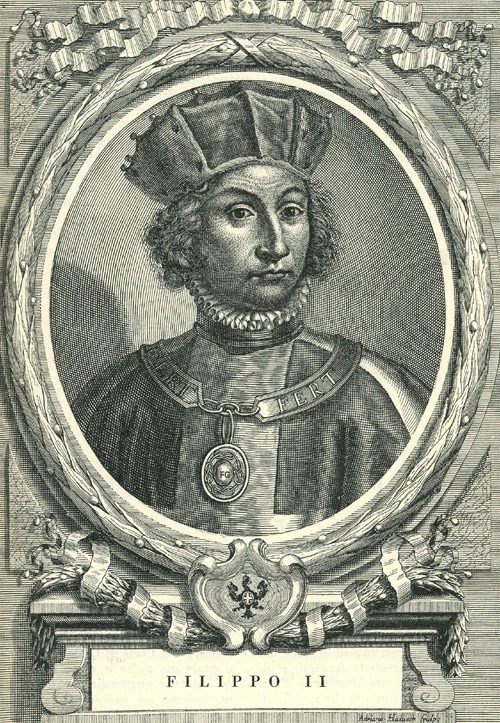







Royal Birthdays for today, February 5th:
Sanjō, Emperor of Japan, 976
Philip II, Duke of Savoy, 1438
René of Châlon, Prince of Orange, 1519
Maria Elisabeth, Archduchess of Austria, 1737
Mary, Queen of Denmark, 1972
Muhammad Ali of Egypt, Prince of the Sa'id, 1979
Peter, Hereditary Prince of Yugoslavia/Serbia, 1980
Arthur Chatto, Grandson of Princess Margaret, 1990
Jigme Namgyel Wangchuck, Crown Prince of Bhutan, 2016
#maria elisabeth of austria#queen mary#Jigme Namgyel Wangchuck#arthur chatto#prince peter#Muhammad Ali of Egypt#rene of chalon#philip ii#emperor sanjo#long live the queue#royal birthdays#Peter Karageorgevitch
10 notes
·
View notes
Text
You know looking back on it. I’m conflicted about not getting a second season of Becoming Elizabeth. Specifically coming from me as a Philip fan.
On the one hand I’m glad I didn’t get to see how they butchered his character and see it become the most recognizable version of him in pop culture.
On the other hand I feel like I really missed out with all the money I could have made from the gambling predictions I made on discord

10 notes
·
View notes
Photo

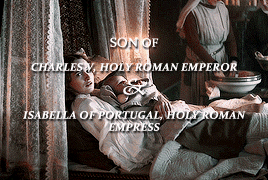
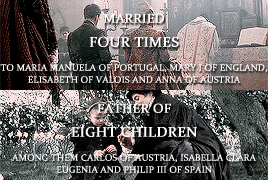

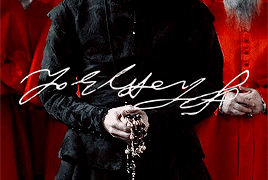



→ 21 May 1527: the birth of Philip II of Spain
To historians he is an enigma: he receives us as he did his ambassadors, with the utmost cortesy, listening to us, replying in a low and often unintelligible voice. Never speaking of himself at all. For three whole days just before he died, he confessed the errors of his lifetime. But who could truly imagine these errors, numbered before the tribunal of a conscience whose judgements may or may not have been just, as it searched the recesses of a long life? Here lies one of the great mysteries of his life, the shadow which if we are truthful we must leave across his portrait. Or rather his many portraits. What man does not change in the course of his life? And Philip’s life was a long and disturbed one, from the painting by Titian of the prince in his twentieth year to the terrible and moving portrait by Pantoja de la Cruz which show us the king at the end of his reign, the shadow of what he once had been. — Fernand Braudel, The Mediterranean and the Mediterranean world in the age of Philip II
#on this day in history#today in history#historyedit#history#philip ii of spain#philip ii#spanish history#16th century#early modern history#house of austria#house of habsburg#*mine#happy birthday felipito <33
221 notes
·
View notes
Text



Cursed historical Valentines be upon ye again
#The Philip one is my masterpiece i hate him iykyk#my art#history art#valentine's day#valentines meme#valentines card#valentines day#empress elisabeth of austria#elisabeth of austria#empress sissi#empress sisi#charles ii of spain#carlos ii#Charles ii#philip ii#philip ii of spain#Also idc if FJ really have Sissi STDs or not my book says he did. If yours doesn't it's your historian against mine#More importantly this is a franz joseph hate account if u wanna drag me for it just keep that bland asshole to yourself & scroll on 💅#Philip transcript: will. I WILL. You have no choice actually#i mean maybe you do? But if it were up to me i mean hey do you wanna get a coffee i love coffee today i ordered a
56 notes
·
View notes
Text
Historians have really done Philip a disservice.
They criticise Philip for not caring that Mary was dead because he said "I felt a reasonable regret for her death." But what's the next sentence in that source? "I shall miss her."
So either, TRACY BORMAN, you didn't read the primary source before you quoted it- which is lazy- or you quoted very selectively because let's be honest, the letter seems much more callous when you quote that sentence in isolation.
11 notes
·
View notes
Text
For me Philip II (of Macedonia) has dilf energy but Alexander is permanently stuck in frat boy jail and this is a direct consequence of their respective reception by Pompey
23 notes
·
View notes
Text
In the realm of ancient political power struggles, treachery and assassinations were a common occurrence. Rivalries were settled through poison, betrayal and violence, determining the fate of both powerful figures and their nations.
#Assassination#Murder#betrayal#Julius Caesar#killers#Pompey#Darius III#Caligula#Philip II#Commodus#Achaemenid#ancient#history#ancient origins
20 notes
·
View notes
Text

25 July 1554: Mary I of England marries Philip of Spain.
#Mary Tudor#Queen Mary of England#Queen Mary I of England#Mary I of England#Philip II of Spain#King Phillip II of Spain#Rey Felipe II de España#Felipe II#Philip II#House of Habsburg#Casa de Habsburgo#Tudor Dynasty#House of Tudor#Tudors#Habsburgs#Tudor edit
19 notes
·
View notes
Note
Would Alexander have really married Cleopatra Eurydice? He seems to have respected her enough despite her relation to Attalus- some sources say when removing her statue from the Philippeum he transferred it to another respected place in Heraion. Did they get along personally? How would their marriage have changed matters, if at all?
Okay, first, I believe we have a confusion/conflation of Eurydikes. The one from the Philippion is Philip’s mother, wife of Amyntas III. Her statue was never removed out by Alexander, so I’m unsure what the asker is referring to? The statues were lost over time, but we have the statue bases, and descriptions of the monument. See especially Elizabeth D. Carney, “The Philippeum, Women, and the Formation of Dynastic Image,” in W. Heckel, L. Tritle, and P. Wheatley (eds.) Alexander’s Empire: Formulation to Decay (Claremont, CA, 2007) 27-70. For Eurydike herself, see Olga Palagia, “Philip's Eurydice in the Philippeum at Olympia,” in E. Carney and D. Ogden (eds.), Philip II and Alexander the Great (Oxford 2010) 33-41.
“Eurydike” became a dynastic name, so it keeps popping up among Argeads (and later). Philip’s mother was Eurydike, as was his daughter, wife of Philip III Arrhidaios: (Hadea) Eurydike. Also Kleopatra, niece of Attalos, took the name Eurydike when she married Philip. But she was never in the Philippeon. Philip’s only wife represented there was Olympias, mother of his heir, Alexander. Amyntas III and Eurydike appeared as his parents.
We have no idea if Alexander shared more than a few words with Attalos’s neice. Given her uncle’s hostility towards him, he would likely have minimized contact. Also, timing was against it. Alexander left on the heels of the marriage, was gone 6 months to a year, then likely kept his distance after his return. While Macedonian women were not as sequestered as in Athens, men and (respectable) unrelated women still didn’t mingle freely. If he did interact with her, it would have been when visiting the women’s rooms to see his sisters, with plenty of women present. If marrying a dead father’s widow had precedent, an affair with the wife of one’s living father was another thing. Alexander knew his mythology, and would’ve had no desire to be Hippolytos.* After he took the throne, he had to leave relatively quickly to settle affairs in the south…and she was (likely) dead before he returned.
As for the marriage… this was suggested by my colleague, Tim Howe: “The Giver of the Bride, the Bridegroom, and the Bride,” in T. Howe, S. Müller, and R. Stoneman, Ancient Historiography on War and Empire (Oxbow, 2017) 92-124. Nothing in the ancient sources says Alexander planned such a marriage BUT marrying the wife (especially if young) of the former king wasn’t novel in Macedonia; Archelaos did the same. It was accepted practice generally.
The titbit that might suggest Alexander did plan to wed Kleopatra-Eurydike … Olympias murdered her.
Now, ignoring Justin’s account of a son Karanos, which is wrong (for reasons I don’t have time to go into), Kleopatra-Eurydike’s child was a girl (Europa). That means Kleopatra had no power in the women’s rooms after Philip’s assassination. So why the hell would Olympias kill the infant (and her, by extension)? Revenge alone?
Possibly. Revenge, especially for a slight to timē (personal honor), was a perfectly respectable reason to kill someone. “Turn the other cheek,” or “When they go low, we go high,” is a very Christianized view. But an even better revenge would have been to let her live to raise an extra daughter under the king her uncle had insulted and schemed to replace. Philip had 3 prior adult/almost adult daughters. A 4th, well over a decade from marriageability, was a day late and a dollar short. She could expect a miserable existence in the Pella palace where she was no threat to Olympias.
Unless Alexander planned to marry her in a diplomatic solution to suppress Attalos’s faction, and secure Parmenion’s support. (Attalos had married Parmenion’s daughter.) I strongly suspect Philip’s final marriage was not the midlife-crisis love match Plutarch/Diodoros present, but an attempt to deal with push back in his latter years. Alexander may have decided that marrying the girl was the best way to deal with it too.
And if Alexander did plan to marry her, she was a threat to Olympias’ influence. This isn’t necessarily jealousy. Olympias may have decided that wooing the snake wasn’t sound policy. Remember that Alexander was barely twenty and Olympias would have been between 36 and 38, with oodles more political experience. While sure, her move was self-serving, it also may have been sound policy to keep her son from the match. (Two things can be true at once.)
Alexander need not have publicly declared an intention to marry his father’s widow; he had bigger fish to fry in the immediate aftermath. Yet if he’d discussed it privately, his mother may have moved to eliminate the possibility while he was out of the country. The brutality of the murder certainly suggests a vengeance theme.
Incidentally, while the death of Europa at Olympias’s hands (and Eurydike’s subsequent suicide) is not securely dated in our sources—except that Alexander wasn’t in Pella—it almost certainly occurred in the first months after Philip’s death, during Alexander’s first trip into the Greek south, to shore up support for the Persian invasion and re-ratify the Corinthian League.
As for how their marriage may have changed things…it would almost certainly have put Alexander under the thumb of Attalos-Parmenion. We can see, in the appointments of his two sons, that Parmenion alone held great sway in Alexander’s early years—but at least he wasn’t an in-law. For once, Olympias and Antipatros were likely on the same side. (Antipatros and Parmenion weren’t precisely friendly.) If, as I suspect, Philip made that marriage for political reasons, it suggests the Attalos faction—whatever that entailed—was strong enough to force Philip’s hand before leaving on a probable long-term campaign. That means Attalos was powerful. And a 20-year-old Alexander was no match for him, even if adolescent arrogance may have made him think he was. Olympias may also have decided/suspected that the Attalos-Parmenion tie wasn’t as strong as Alexander feared—which proved to be true. When push came to shove, Parmenion allowed Attalos to be eliminated on Alexander’s order.
Arrian glosses over all this. I wish we had the first two books of Curtius, who likely covered the story of Alexander’s accession in more detail. It would provide more clues. Attalos sorta comes out of nowhere at the end of Philip’s life. Although Diodoros’ account of his reign is so truncated we don’t know the marshals under Philip well, so he may have been around longer than it seems.
————-
* Alexander knew his mythology. Theseus’s second wife, Phaidra, was reportedly cursed to conceive a passion for her (more age-appropriate) son-in-law, Hippolytos. Yet Hippolytos had pledged his virginity to Artemis, offending Aphrodite, who was behind the curse. When Hippolytos rebuked poor Phaedra’s advances, she suicided, leaving a note implicating Hippolytos (for rape). As punishment, Theseus asked his father Poseidon to kill his son. While out in his chariot, a sea monster spooked the horses, he fell out the back but got tangled in the reins, and they dragged him to death. A variation exists in which Aisklepios brings him back from death but Hades is so offended/(worried) by this power, he asks his brother Zeus to strike down Aisklepios by lightning…which he does. One of the few cases of a god dying. (They’re immortal, yes…but can be killed; it’s just that few things can kill one. Being fried by lightning will do it.)
#asks#Kleopatra-Eurydike#Alexander the Great#Philip II#Attalos#Attalus#Cleopatra-Eurydice#Olympias#Macedonian marriage#Parmenion#ancient Macedonia#Alexander the Great's early years#ancient Greece#Classics
10 notes
·
View notes